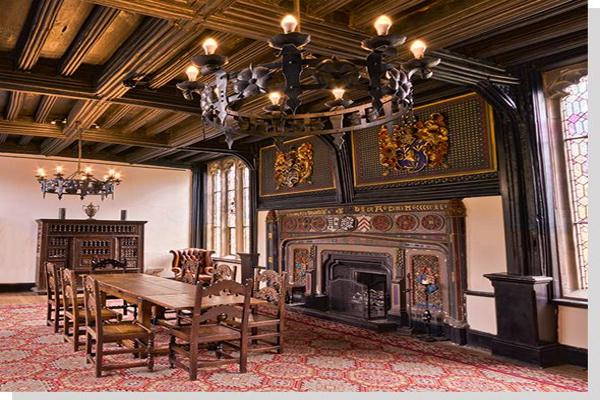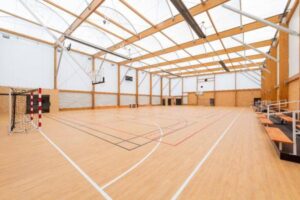How Are Building Material Tests Used in Heritage Restoration Projects?
Restoring historic buildings is more than a construction project—it’s a delicate blend of science, craftsmanship, and cultural responsibility1. At the core of these efforts lies one key element: material testing2. By understanding the properties and conditions of old materials, and ensuring compatibility with new ones, restoration teams can preserve the authenticity, safety, and structural integrity3 of heritage sites. Here’s how building material testing supports this vital work.
Non-Destructive Testing for Assessing Historic Materials
When dealing with priceless architecture, invasive sampling isn’t always an option4. That’s why non-destructive testing (NDT)5 is essential in evaluating the condition of heritage materials without harming them.
Métodos NDT comunes:
- Ultrasonic Pulse Velocity (UPV): Detects internal cracks in stone or masonry.
- Infrared Thermography: Reveals moisture intrusion, voids, or delamination.
- Ground Penetrating Radar (GPR): Maps subsurface elements like old foundations.
- Rebound Hammer Tests: Estimates surface hardness of aged concrete or plaster.
| Technique | Application in Heritage Sites |
|---|---|
| Ultrasonic Testing | Locates hidden voids in stone walls or statues |
| IR Thermography | Identifies trapped moisture under decorative layers |
| GPR | Detects buried structures without excavation |
| Martillo de rebote | Assesses surface strength without core removal |
These methods allow specialists to preserve both material and historical value, while collecting data essential for repair planning.

Matching New Materials with Original Heritage Substances
Successful restoration depends on finding or replicating materials that mirror the original in appearance, behavior, and composition. Testing plays a critical role in this material-matching process.
Key Testing Techniques:
- Petrographic Analysis: Identifies mineral composition of stone, mortar, or concrete.
- Chemical Analysis (e.g., XRF or SEM-EDX): Detects elemental makeup of finishes and binders.
- Colorimetric and Texture Tests: Ensure visual harmony between new and old elements.
| Original Material | Matching Requirement | Testing Method |
|---|---|---|
| Historic lime mortar | Binder ratio, aggregate source | XRF, acid digestion, sieve analysis |
| Decorative stone facade | Mineral type, porosity, weathering level | Thin section petrography, SEM |
| Glazed tiles or paint | Pigment identity and finish type | Spectroscopy, visual analysis |
The goal is seamless integration, maintaining heritage authenticity while ensuring structural performance.

Testing for Compatibility in Heritage Restoration
Even if a material matches visually, it may behave differently under stress, moisture, or temperature. That’s why compatibility testing is critical before introducing modern materials into ancient environments.
Compatibility Tests Include:
- Thermal Expansion Testing: Prevents cracking or detachment between layers.
- Vapor Permeability Testing: Ensures breathability of walls to avoid trapped moisture.
- Salt Crystallization Tests (EN 12370): Measures how materials withstand salt attack, common in old masonry.
| Material Pair | Potential Risk | Test to Confirm Compatibility |
|---|---|---|
| Lime plaster + modern primer | Reduced permeability, blistering | Vapor permeability (ISO 7783) |
| Stone + epoxy adhesive | Expansion mismatch | Thermal compatibility testing |
| Brick + new pointing mortar | Salt movement and surface spalling | Salt crystallization test |
Ensuring compatibility helps avoid long-term damage, even when repairs appear successful at first glance.

Preservation-Oriented Material Testing Protocols
Heritage projects often follow customized protocols that go beyond standard building codes. These protocols are guided by preservation charters, local conservation agencies, and best practices in historic material science.
Key Considerations:
- Minimal intervention principle: Test only as much as necessary.
- Reversibility: Ensure tested materials or treatments can be undone if needed.
- Documentation: Maintain full test records for future reference and conservation audits.
| Preservation Principle | Testing Implication |
|---|---|
| Minimal intervention | Emphasizes NDT over destructive methods |
| Authenticity | Requires thorough analysis before material substitution |
| Longevity | Demands environmental simulation testing |
In many cases, these protocols also require independent verification from accredited heritage labs, reinforcing the trust and reliability of test results.

Conclusión
In heritage restoration, testing isn’t just technical—it’s cultural stewardship6. From non-destructive evaluation to compatibility analysis and preservation-led protocols, building material tests provide the scientific foundation7 that supports the art of saving history. Every brick, beam, and fragment tested contributes to keeping our shared architectural legacy authentic, enduring, and alive for generations to come8.
-
Cultural responsibility is vital for maintaining heritage. Learn more about its role in preservation efforts through this insightful link. ↩
-
Understanding material testing is crucial for preserving the integrity of historic buildings. Explore this link to learn more about its significance. ↩
-
These three elements are essential for successful restoration. Discover how they impact heritage sites by exploring this resource. ↩
-
Understanding the limitations of invasive sampling can help in making informed decisions about preserving priceless architecture. ↩
-
Exploring NDT will provide insights into how heritage materials can be evaluated safely, ensuring their preservation for future generations. ↩
-
Understanding cultural stewardship is essential for appreciating how heritage restoration preserves our history and identity. ↩
-
Exploring the scientific foundation reveals the methods that ensure effective and respectful restoration of historical sites. ↩
-
Discovering the importance of authenticity in heritage helps us value and protect our architectural legacy for future generations. ↩







